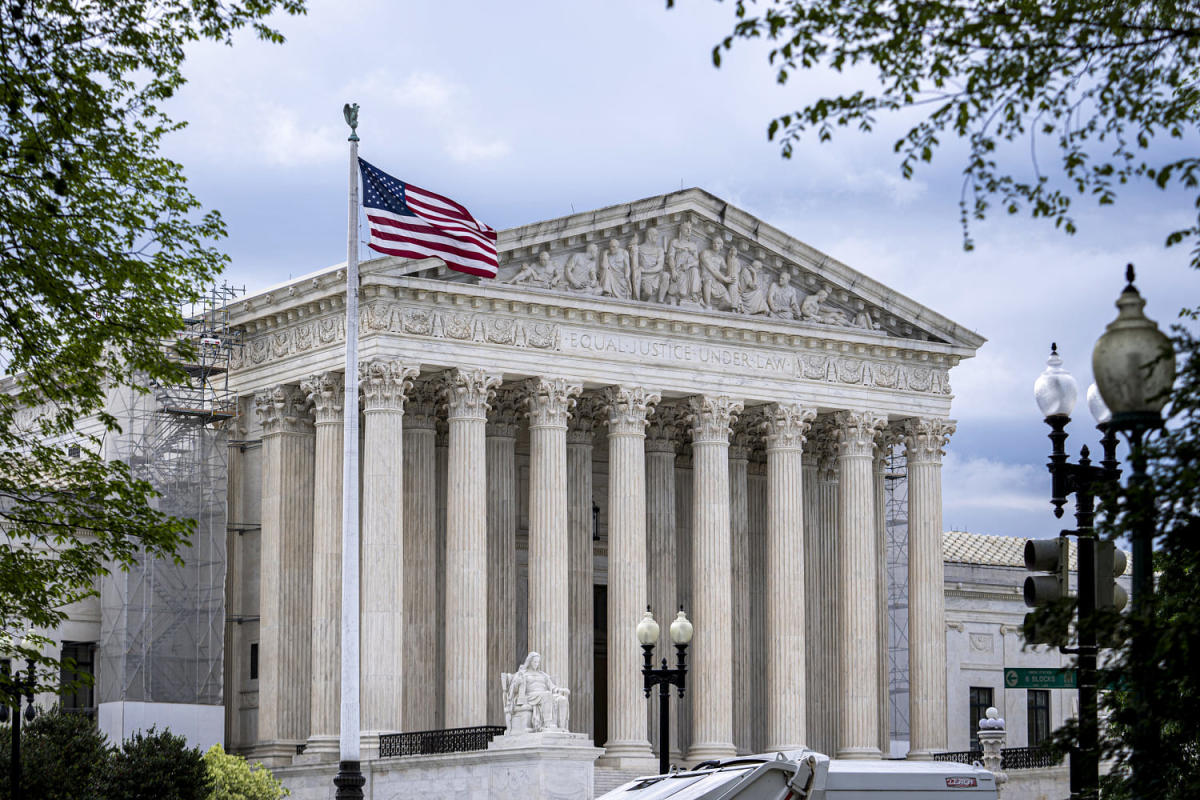Who are the greatest New York Rangers of all time?
From Brian Leetch to Henrik Lundqvist, here is a look at the greatest New York Rangers in franchise history.
Fresh off an exhilarating finish to the second round, the Rangers are bracing for their second Eastern Conference Final in the last three years.
It was Tampa Bay standing in their way back in 2022, and while they’ll remain in the Sunshine State this time around, they’ll have to travel a bit further south to get to Sunrise, the home of the Florida Panthers.
The defending conference champs will offer the toughest test yet in this year’s playoffs, with Game 1 set for Wednesday at 8 p.m. at Madison Square Garden.
“They’ve been a top team in the league,” Rangers head coach Peter Laviolette said. “Playing for the Cup last year, finishing first in their division. … They bring speed, they bring size, they bring skill and physicality. There’s some similarities to Carolina, the way they play and the aggressive mindset. Some of that will be similar, I think, in preparation, but they’re also a little bit different. We’re just getting into it now.”
Filip Chytil: Oft-injured forward feels ready for EFC: ‘I want to play’
We’ll roll up our sleeves and analyze the matchup from every angle in the coming days, but let’s begin with five overarching questions regarding the Blueshirts’ ongoing quest to end their 30-year championship drought.
1. How far can the Rangers’ formula take them?
It’s no secret what’s driven the Rangers to success all season and through two rounds of the playoffs. The three-part formula of world-class goaltending, elite special teams and high-end finishing ability has made them a tough out, with all three areas clicking while dispatching of the Washington Capitals and Carolina Hurricanes.
It starts with Igor Shesterkin, who ranks first among remaining goalies with a .923 save percentage and 9.09 goals saved above expectation through 10 playoff games, according to Evolving Hockey. He’s the Blueshirts’ backbone, their most important player and the ultimate “it” factor.
Next up is a dynamic power play that’s converting a 31.4% clip and a red-hot penalty kill that’s at 89.5%, which ranks third and second among playoff teams, respectively. The Rangers have won or tied the special teams’ battle in all but one game so far, with the only exception coming in last week’s Game 4 loss when Brady Skjei scored the winner on one of only two Canes’ PP goals in that series.
Finally, there’s the clutch factor from their go-to players. No one has come up bigger than Chris Kreider, who put the team on his back with an historic hat trick to close out Game 6 in Carolina, while all four of Artemi Panarin’s goals have been game-winners. Vincent Trocheck added an OT walk-off of his own in Game 2, Alexis Lafrenière has scored four goals that either tied the game or put New York ahead and Mika Zibanejad has provided steady production with 14 points (three goals and 11 assists) in total.
That’s allowed the Rangers to overcome somewhat middling play at five-on-five, where they’ve barely outscored opponents through two rounds, 19-18, while being outshot, 249-195, and generating a 47.25% xGF that ranks 12th among 16 playoff teams, according to Natural Stat Trick.
The Panthers rate out better across the board at 5v5, but the same could be said about the Hurricanes. The Rangers have a proven recipe to win with quality over quantity, particularly when it comes to shot totals − in fact, they were outshot in all six games against Carolina − but they can’t afford much slippage in all of their three key areas.
2. Can they match Florida’s ‘battle level’?
From the day he was hired last summer, Laviolette wasted no time urging the Rangers to embrace “that grind inside the game that makes teams great.” That message resonated throughout the season, resulting in a harder working team both in practice and on game day.
Laviolette demanded they up what he’s repeatedly referred to as “battle level” because he believes it’s required to take the next step. It’s important to have offensive skill, but there’s a hustle-and-grit component that’s necessary to become a champion.
The Panthers embody that mantra. They’re oozing with all-star talent at every position, but there’s a distinct tenacity that emanates throughout their lineup. That’s led by Matthew Tkachuk, who’s not only their best player but also one of the NHL’s most ferocious competitors. The list goes on from there, including pain-in-the-neck forwards Sam Bennett, Nick Cousins and Ryan Lomberg and a defensemen group that’s big, mobile and uses its size to push opponents around. Even 57-goal-scorer Sam Reinhart plays with a noticeable edge.
Like Carolina, Florida is an in-your-face forechecking team that will make you earn every inch of ice. The difference is that the Panthers do it with more of a mean streak, which will put Laviolette’s toughened-up Rangers to the test, both physically and emotionally.
“They might do it a little bit differently,” Laviolette said when asked about Florida’s physicality compared to the Canes. “Every team is going to present different challenges, so we’ll just have to make sure that we’re ready.”
3. What will the D pairs look like?
The Rangers used the same defensive combinations for the first nine playoff contests before making a change in game No. 10, which produced mixed results.
That represented a shift in strategy. A late-season switch led to a trio of pairs − Ryan Lindgren and Adam Fox; K’Andre Miller and Braden Schneider; Erik Gustafsson and Jacob Trouba − who were used fairly evenly, with Laviolette trusting all three in most matchups and distributing the minutes accordingly.
By reverting to the familiar duo of Miller and Trouba for Game 6, the coach went back to leaning on his top-two pairs while limiting the usage for the clear No. 3 of Gustafsson and Schneider.
Perhaps it was in response to a rough Game 5 for Miller and Schneider, who were on ice for two of Carolina’s four goals while registering a 37.5% shot share. But they had largely been the Rangers’ best pair in the eight games prior, while Gustafsson and Trouba were the ones being victimized most often.
It’s also possible Laviolette wanted to separate the two veterans and put them back with their usual partners, but it sent their ice time in very different directions. Trouba logged a team-high 23:43 TOI in Game 6, with 20:42 coming at 5v5, while Gustafsson ended up with a playoff-low 13:49.
The next move will be telling. Were the what’s-old-is-new-again pairs a temporary throwback in an attempt to finish off the Canes? Or has Laviolette decided to go back to his regular-season approach, which means relying heavily on Miller and Trouba for the toughest assignments?
4. Who could be an X-factor?
How about Lafrenière? The 22-year-old forward is coming off a breakout, 57-point regular season and has carried that momentum onto the grander playoff stage.
He was sneaky good with four assists in four games against the Capitals, then busted out in a much more obvious way with six points − including four goals − in six games against the Hurricanes. You could argue he was the Rangers’ best skater in Games 2, 3 and 4, when he combined for five points and 13 shots on goal.
“He seems to be getting stronger,” Laviolette said following Game 4 in Carolina. “It was nice to continue to see him take steps in the playoffs and be a difference maker.”
It will be huge if Lafrenière can maintain that point-per-game pace against the Panthers. Of equal importance will be keeping up his assertive play, both in terms of getting to high-danger areas and playing with a physical edge.
If the Rangers are going to go toe-to-toe with Florida’s loaded top six, they’re going to need No. 13 to help tip the scales.
5. Will we see Filip Chytil or Blake Wheeler in this series?
The odds seem better for Chytil, who said he’s feeling “great” following Sunday’s practice at the MSG Training Center and made it clear, “I want to play.”
If healthy, the talented 24-year-old is undoubtedly one of the Rangers’ 12-best forwards. He’d bring much needed offensive punch and a shooter’s mindset to the third line while infusing the lineup with speed.
Barring another hiccup, there’s a decent chance we’ll see Chytil at some point in this series, perhaps as soon as Game 1. But given his history of head injuries, this remains a very delicate situation. Credit the Rangers for handling it that way, rather than rushing him back after he came out of his emotional Game 3 return both sick and sore.
Wheeler, who’s coming off a right-leg injury that was initially feared to be a season-ending, feels like a longer shot for a couple reasons.
For starters, he was just cleared for full contact last week and has had significantly less practice time than Chytil. And secondly, there’s a less convincing argument that he fits in the current lineup.
The Rangers acquired Jack Roslovic to replace Wheeler in the right-wing spot on the top line, and while it hasn’t been smooth sailing the whole time, the 27-year-old has posted seven points (two goals and five assists) through 10 playoff games − including a pair of third-period assists in the series-clinching win over Carolina.
Even before Wheeler’s injury, there were questions about his diminishing foot speed and production. And since he doesn’t profile as a fourth-liner, it would likely require an injury to a top-nine forward for the 37-year-old to slot back in.
Still, it’s a luxury to have that kind of proven depth waiting in the wings.
Vincent Z. Mercogliano is the New York Rangers beat reporter for the USA TODAY Network. Read more of his work at lohud.com/sports/rangers/ and follow him on Twitter @vzmercogliano.

Daniel Miller is a sports fanatic who lives and breathes athletics. His coverage spans from major league championships to local sports events, delivering up-to-the-minute updates and in-depth analysis for sports enthusiasts.







